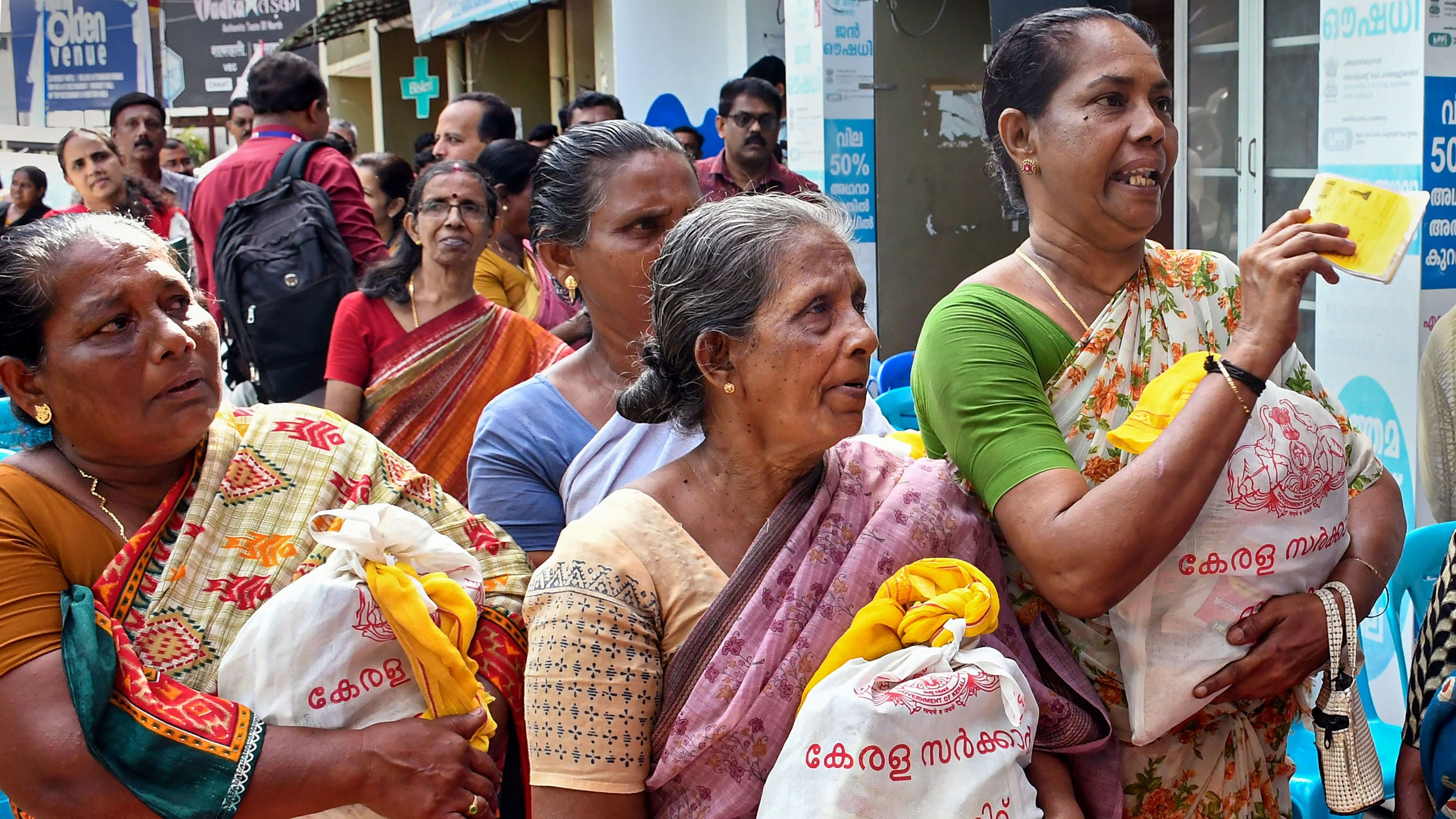
Women receive food kits distributed by government through ration shops.
Credit: PTI Photo
The plan mooted by the government to turn fair price shops into nutrition hubs for the distribution of millets and their derivatives is an extension of the programme to promote the consumption of millets. Millets will be provided in addition to rice and wheat, now being distributed through the Public Distribution System (PDS) outlets.
Fair price shop agents are expected to procure millets and distribute them under the programme. The Standing Committee on Food and Consumer Affairs had proposed this, and the plan has been formalised now. It will be financed by the Small Industries Development Bank of India, and fair price shop personnel will be trained by the National Institute of Small Enterprise and Development in the implementation of the plan. All the 5.38 lakh ration shops in the country will be covered by the programme. It involves not just an expansion of their activities but also a transformation of their quality.
The programme will face many challenges. Organisational issues are the least of them. There may be problems both on the supply and demand sides. In the first place, there has to be enough demand for millets for the programme to be viable. The promotion of millets by the government, nutritionists and others has created a sentiment in favour of them. But consumption has not increased substantially. Millets are staple in some parts of the country and they continue to be consumed there. But over the years, there has been a shift to foodgrains like wheat and rice.
There is a trend now to move towards millets, especially in urban areas, for nutritional and health reasons, and even as a fashion statement. But large scale consumption changes are yet to take place. When rice and wheat are available for free for large numbers of people, the demand for millets would not be high. Millet prices are also higher than the prices of rice and wheat. Encouragement, promotion and greater availability of millets through ration shops may boost consumption. The programme needs to be seen in this light.
In spite of all the focus on millets, their output and the area under cultivation have been falling over time. The government has made increases in the minimum support process but production has not increased substantially. If demand increases, production can also increase. India is the world’s top millet-producing country, accounting for 42% of the global millet production. There is scope for increasing production. Millet cultivation has many advantages too, like the need for less water. It is a good programme, but sustained efforts are needed to make it a success.